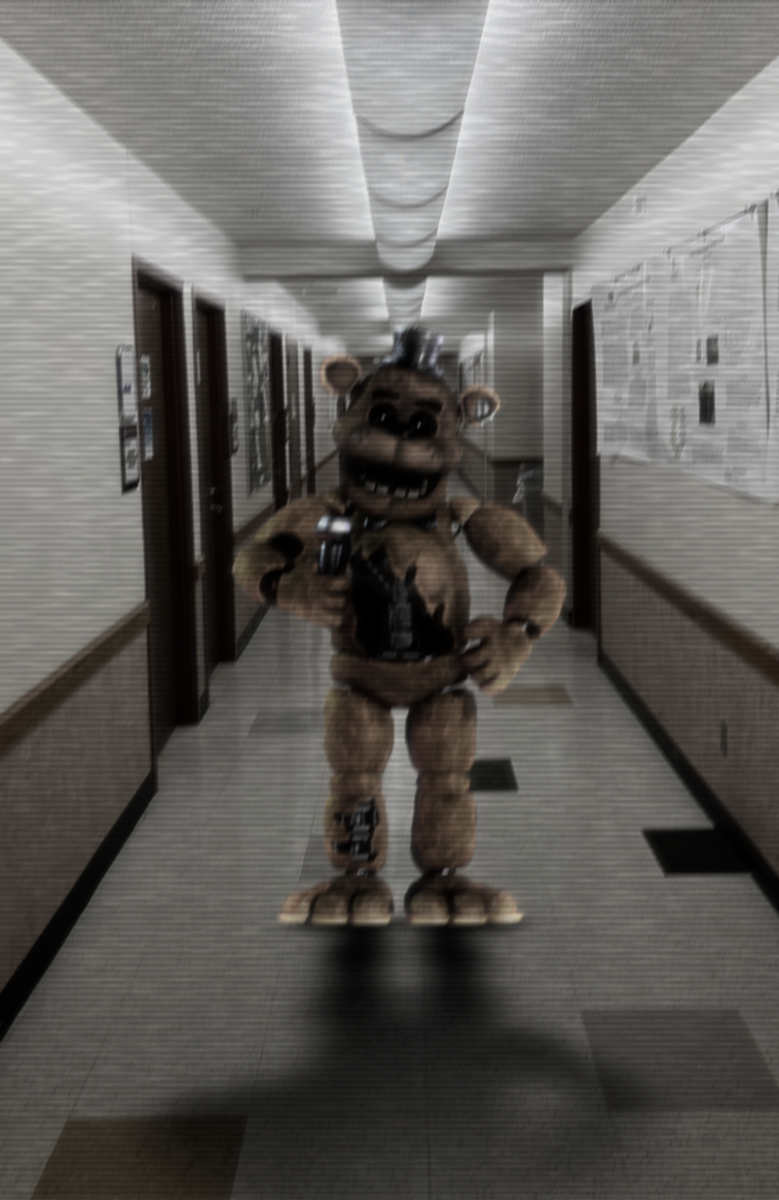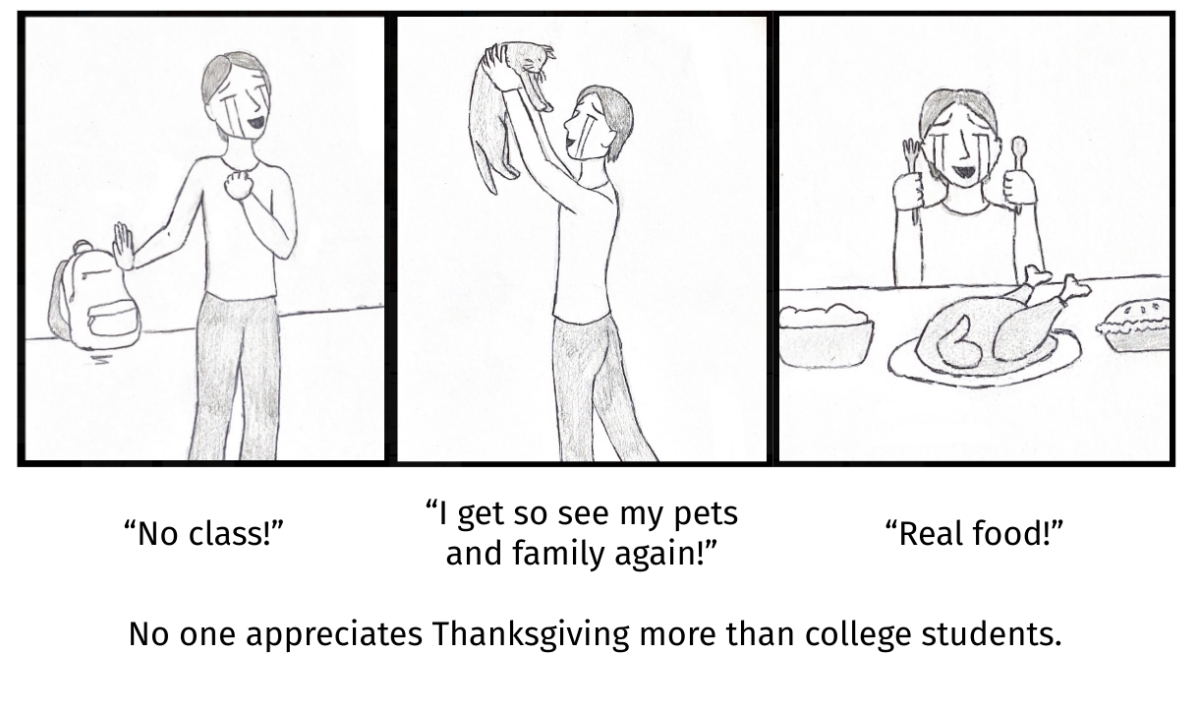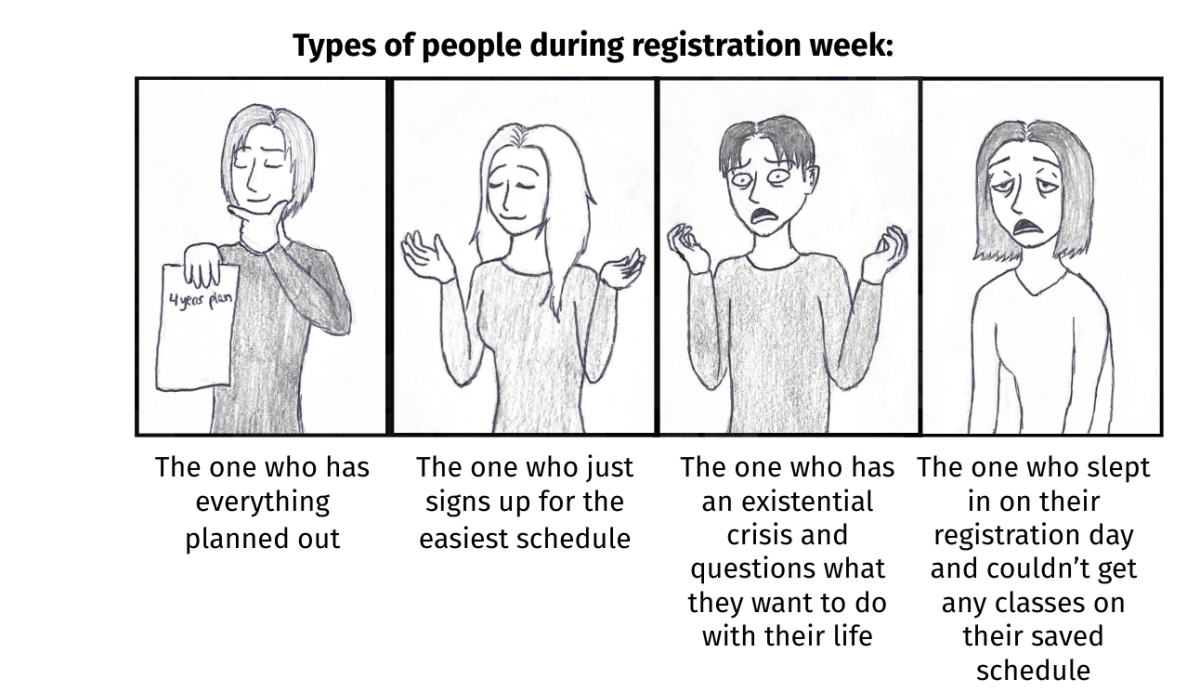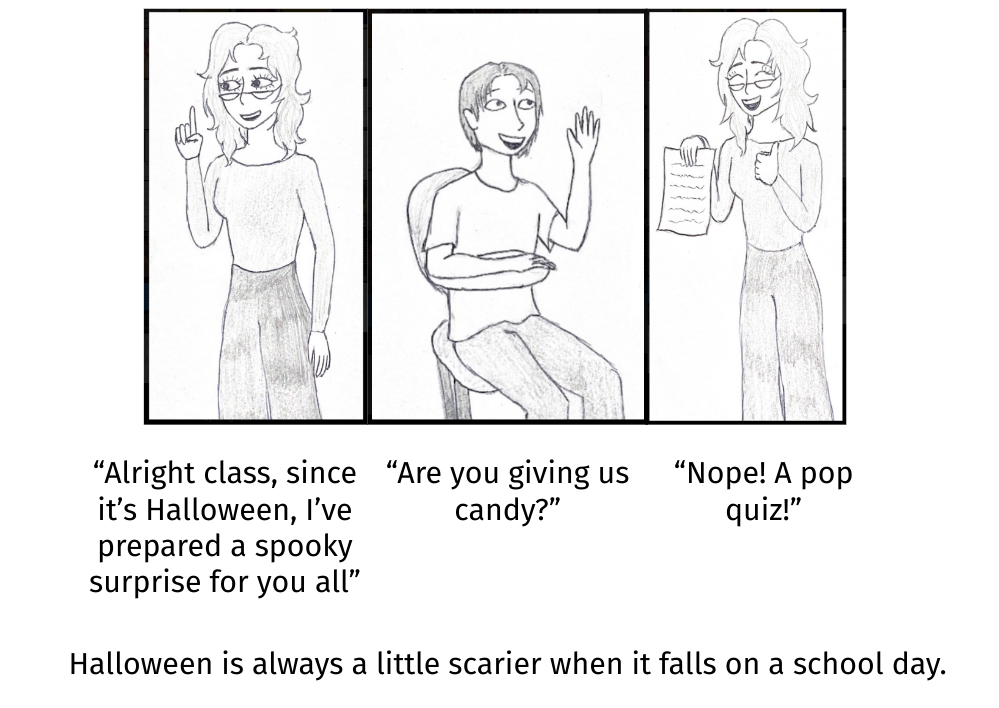In a contemporary media culture that seems to constantly shift its focus to the newest and most sensational thing, perhaps no other recent franchise has managed to sustain such an enduring relevance as “Five Nights at Freddy’s,” or simply FNAF, has.
Originally a horror game created by independent developer Scott Cawthon in 2014, the series has since ballooned to include nine video games, a series of spin-offs, a trilogy of novels and most recently, a feature film.
The first game in the FNAF series was published via Steam, a digital distribution service where developers can sell virtual downloads of their games online, and its blurb states, rather innocuously, that “the main attraction is Freddy Fazbear, of course; and his two friends. They are animatronic robots, programmed to please the crowds! The robots’ behavior has become somewhat unpredictable at night however, and it was much cheaper to hire you as a security guard than to find a repairman.”
Once the gameplay begins, the initial premise is straightforward: players occupy the role of a security guard, monitoring the doors and cameras of their office to keep the animatronics at bay while conserving power. However, each game is rife with hidden lore that allows a fan culture of deep engagement and theorization to emerge.
Wes Nudlbichler, a former fan during the game’s early days, wrote in a text exchange about how they first found out about the series and why it appealed to them.
“I’ve always been intrigued by horror since I was young: naturally drawn to the genre through video games and movies,” Nudlbichler said. “Unfortunately, I was too young for most of the things I wanted to enjoy and got scared pretty easily. FNAF was the perfect gateway drug for me alongside other commonly popular horror video games of the early 2010’s. Digestible, intriguing, and not too freaky, it was the perfect thing to really get me going and even theorize about with friends who felt the same.”
This could perhaps be part of why the game has remained popular for so long. The game provides an accessible entry into the horror genre, but leaves fans with much more content to uncover. In this way, community is built through shared exchange of theories and fan collaboration to piece together a complicated narrative that continues to elaborate upon itself with each new release.
The iconic cast of characters also managed to inspire a new subgenre of horror that took the internet by storm.
“It was the beginning of the ‘mascot horror’ subgenre, cementing itself immediately into internet culture,” Nudlbichler said. “It’s a short, easy-to-understand game, hiding a convoluted story that no one can seem to agree on, which is exactly what attracts people to it — to stay until it’s solved, until the answers are revealed.”
TV Tropes, a fan-operated website dedicated to documenting plot conventions and devices, defines “mascot horror” as “a type of indie horror game popularized in the mid-2010s. Instead of masses of enemies, an intangible terror, or an actively horrific threat, make the main terror be a recognizable, corporeal character (or group of characters) who, with some defanging, could easily be the mascots of a children’s media franchise (and often are in-universe).”
Many other conceptually similar “mascot horror” games have followed in FNAF’s wake, from “Tattletail” in 2016 to the more recently released “Poppy Playtime” in 2021, demonstrating its ongoing impacts on online gaming communities.
Even after many years, FNAF still continues to hold importance for fans who were able to form communities over the game.
“I met what I consider to be the closest friends I’ve ever had the pleasure of meeting, and owe so many genuinely good memories to FNAF,” Nudlbichler said. It’s incredible to me that there’s still so much love for the franchise, even now it still holds strong.”
Ultimately, FNAF’s recent cinematic release plays to both the excitement of new fans and the nostalgia of old fans, continuing the reach of the ever-expanding series.
Nine years of Freddy’s: a retrospective
The impact and legacy of
Five Nights at Freddy’s
nearly a decade later
lives on.
Max Ridenour, Life Reporter
November 1, 2023
Categories:
FNAF Cultural Impact Illustration (Photoshop Composite)
Story continues below advertisement
2
More to Discover

















